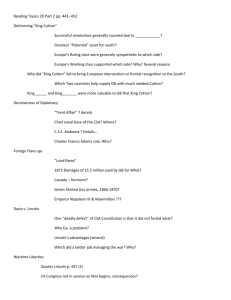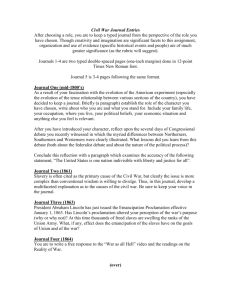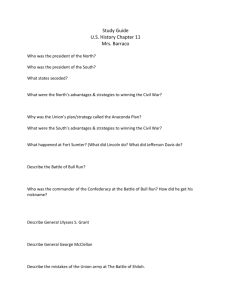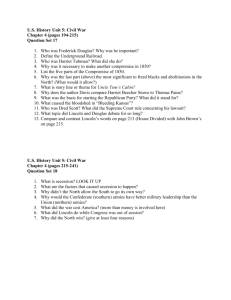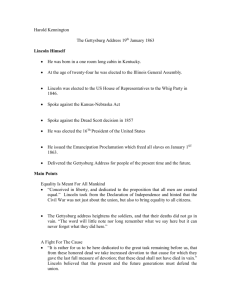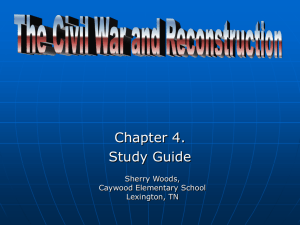Chapter 15 The Union Severed
advertisement
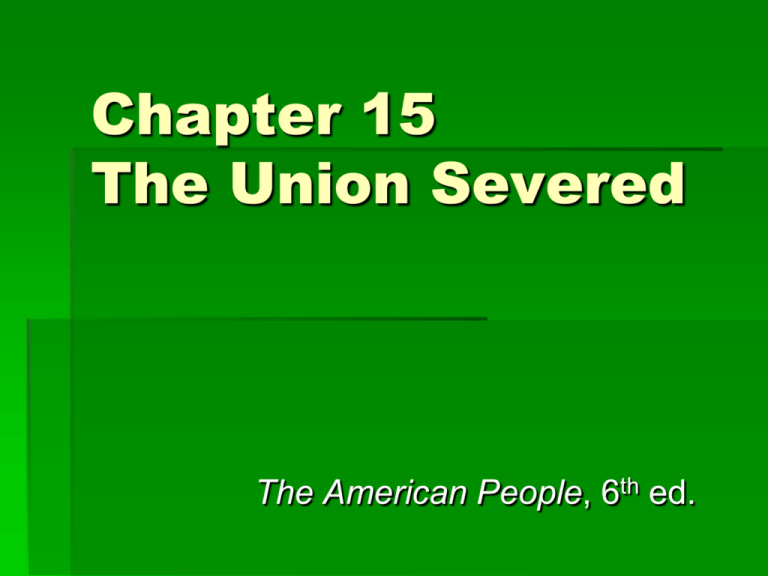
Chapter 15 The Union Severed The American People, 6th ed. I. Organizing for War The Balance of Resources In the early days of the war, the armies of the North and South were comparable. Many northern assets would not become effective until months later. Although the North had a superior logistical base, the South believed the quality and experience of its people alone could win the war. Border States The states of the upper South provided a natural border between the two belligerents. The loyalty of each of these states represented a important milestone to both Confederacy and Union. II. Clashing on the Battlefield War in the East General Winfield Scott, commander of the Union forces pressed for a long, cautious strategy that became known as the Anaconda Plan. Sea and land blockades would strangle the South. Lincoln and the voters preferred action and a quick victory. War in the West In the western theatre of war, the Union had two ma objectives: The domination of Kentucky and eastern Tennessee which were natural avenues of travel from east to w The control of the Mississippi River to split the Confederacy and prevent its ability to trade Ulysses S. Grant proved his leadership abilities in th Vicksburg campaign, causing Lincoln (after man other choices) to settle on Grant as supreme commander. Cotton Diplomacy Although recognition by even one of the European powers would give the South credibility as a sovereign nation, the Europeans were quick to declare neutrality. Southerners mistakenly assumed that dwindling European supplies of cotton as the war progressed would eventually force government recognition. European industrialists found new sources of cotton in India and Egypt. Common Problems Both treasuries had started the war empty and the cost of fighting was enormous Both sides initiated taxation on a small scale Both sides tried borrowing in the form of government bonds Both sides resorted to printing inflated amounts of money Both sides confronted severe manpower needs and had to enact some form of draft III. The Tide Turns The Emancipation Proclamation Lincoln envisioned the freeing of the slaves primarily as a tool for crippling the South In 1862, Lincoln tried to entice border states into reducing their slave holdings gradually Lincoln argued that freeing the slaves would ultimately save white lives and preserve the Union Lincoln issued the proclamation on New Year’s Day, 1863 Changing Military Strategies In 1863, Lee decided that a defensive posture would never win the war for the South. Hoping for a victory that would eventually lead to the capture of a great northern city, Lee marched against the Union army at Gettysburg, Pennsylvania with disastrous results. Replacing Meade, Grant adapted the Anaconda Plan to a plan of drastic annihilation. IV. Changes Wrought by War A New South Central government continued to expand in the South, bringing with it increased taxation and interference with private property, the ideals that most Southerners were fighting against More land was converted to raising food crops Many Southerners were forced to accept factory work for the war effort The North Like Davis, Lincoln was accused of running a dictatorship The staggering costs of war helped revolutionize the financial system of the region Agriculture increased, producing surpluses of food Manufacturing increased
